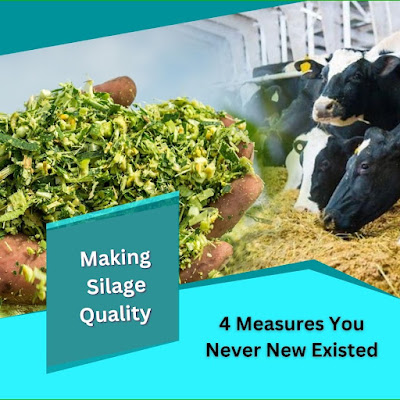Get The Most From The Silage Bales With The Right Storage Strategy
The moment farmers bale their silage, losses start. If farmers do not adequately look into it, the losses can become large, becoming a big issue. On the other hand, appropriately protecting their silage bales from elements such as heat, air, etc., can reduce the losses and make the fodder last longer. So what’s the best solution?
Causes of loss in silage bales
So the big question before handing
over the solution is what causes these losses? Here’s the answer. When farmers
bare big round silage bales to moisture and directly store them on the ground,
it can lead to large-scale losses from water attack, spoilage, pest, and
disease problems. High-humidity environments can also spoil these bales quickly
if left uncovered.
Another factor that affects dry
matter losses is the amount of rainfall on unprotected bales. However, rainfall
is not the only factor that farmers should consider when predicting DM losses.
Microbial respiration can also affect DM losses. It occurs when carbohydrates
in the crop combine with oxygen to create carbon dioxide, water, and heat.
Also, note that cool, dry, and
sunny conditions are safe for silage bales and not extended cycles of warm,
humid, and cloudy atmosphere.
How much loss can occur?
Farmers should know that silage bales
stored directly and unprotected on the ground for storage longevity, which can
last between 6 months and 20 years, can result in a loss of 37% per bale. The
loss primarily comes from the outer bale sections, where fodder is more open to
the elements. Farmers can do these things to reduce such losses.
● Farmers can cover bales on the ground to decrease the loss by about 19%.
● They can also cover and lift the bales to reduce the loss to around 8%.
● The best way to decrease the loss is by storing bales inside. It makes the loss only 6%.
But here’s the catch, the above
methods come with a cost, and one of them is storage loss. To put it simply,
the more silage that farmers lose in storage, the more crops they need to
harvest to make silage for winter.
For example, if a 1200 pound bale is
150 rupees per ton, a 30% loss would make a bale worth 90 rupees will be worth
63 rupees only.
The solutions
Here are the solutions that farmers
were waiting for and rightfully deserve.
Silage bales’ location
Farmers should start protecting their
bales even before they are out of the farmlands. The key to reducing the bale’s
suffering is to tighten it as much as possible. To put it simply, the tighter
the silage bales, the lower the losses. In addition, when compressing their
bales, they should strengthen the outer layer as it is the most exposed to the
weather.
Farmers can also minimize silage loss
by placing the bales correctly outside; they should check that the location has
proper drainage. Also, it should provide a gap between the ground and the bale
to bar moisture absorption. Here are some valuable tips.
● Farmers should store their bales end-to-end.
● They should put the bales together as compactly as possible in lines.
● If farmers require over 1 line, they should ensure a 3 feet distance between the lines.
Options for covering the bales
There are various options for farmers
to cover their bales; they can use plastic tarps, bale wraps, and sleeves that
provide different levels of protection from rainfall. Even though wraps are
costlier than tarps, the former offers better protection. Breathable net wraps
are also available that keep the bales dense, but they are not full
waterproofs. Plastic wraps are better.
Cost factors
Twine is the cheapest bale cover. The
cost increases with net wrap, tarp and plastic wraps being the costliest, but
remember; the cheaper it is, the more turns it requires to cover the bale
completely. A twine requires 20-30 turns, while a net wrap can do the job in 1
and a half of a turn. An ideal wrapping solution is a net wrap with six layers
of plastic wrap.
Balancing costs and silage value: -Farmers should decide their strategies based on
acceptable loss, protection costs, and storage time.
Silage Agro provides farmers with perfectly
packed sugarcane, wheat, and Corn
Silage Bales that have even bale size for proper
storage, making them the top silage producers in the Punjab Silage sector.



Comments
Post a Comment